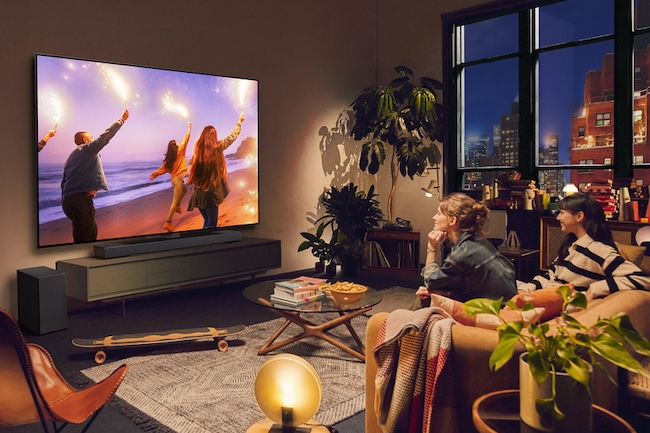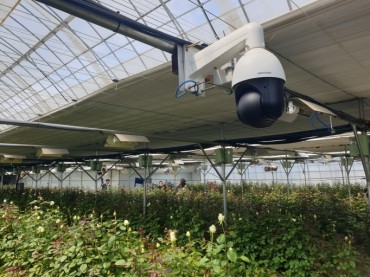
LG Electronics has unveiled the improved AI capabilities of its 2024 lineup of LG OLED TVs. (Image courtesy of LG Electronics)
SEOUL, Mar. 29 (Korea Bizwire) – LG Electronics, which defines artificial intelligence as an “empathetic intelligence” for customers, has unveiled the improved AI capabilities of its 2024 lineup of LG OLED TVs, highlighting a “differentiated AI customer experience.”
On March 27, LG Electronics hosted a press event at its LG Science Park in Mapo-gu, Seoul, where it provided an in-depth look at the improved picture and sound quality, as well as the advanced AI features like Voice ID, in the 2024 LG OLED Evo models.
These new LG OLED TVs, which officially launched in the Korean market on March 13, are powered by the cutting-edge Alpha 11 processor, delivering AI performance that is four times more potent than the previous Alpha 9, according to LG Electronics.
During the live demonstration, the improvement in picture quality was strikingly evident compared to previous models. When comparing movie footage on an existing Alpha AI lineup TV and the new Alpha 11-equipped OLED Evo, the contrast and depth in “areas of interest” like the protagonist’s face were noticeably better.
LG’s AI technology not only analyzes the footage but also interprets the creator’s intent, optimizing the colors accordingly. This “Emotional Picture Quality” feature enables the AI to analyze the color distribution in real-time, rendering the most suitable tones for each scene.
For instance, a shot of a boat in the middle of the ocean appeared more refreshing, while an autumnal tree-lined path exuded a warmer ambiance, compared to the previous models.
The “Super Upscaling” feature, which boosts image quality by analyzing videos pixel-by-pixel in real-time, also demonstrated significant improvements in the Alpha 11 processor. When comparing a scene from a TV drama, the clarity of elements like grass and rooftops was markedly improved. Even text in a home shopping video and celebrity faces appeared sharper, almost as if they had been photoshopped.
Recognizing that family members may have varying picture quality preferences, the new LG OLED TVs offer a Voice ID feature that tailors the settings to individual users’ tastes automatically.
If a user consistently exhibits specific picture quality preferences, the TV will automatically adjust the settings upon their login, eliminating the need for complex manual adjustments. Instead, users can simply select their preferred image from a range of options, and the AI will calibrate the picture quality accordingly.
In line with LG’s “empathetic intelligence” approach, the new OLED TVs feature an AI Chatbot that eliminates the need for service center calls when issues arise. By clicking an icon on the home screen or issuing a voice command like “Help me,” users can activate the chatbot.
Drawing from past customer service data, the AI initially presents six common categories like screen, sound, connectivity, and power. Users can also directly describe their symptoms verbally, such as “The screen is dim.”
After diagnosing the TV’s condition, the AI provides solutions. For instance, if the TV is automatically turning on, the chatbot might suggest, “A turn-on schedule is set. To cancel it, press the cancel button.”
If the issue persists despite the TV’s self-diagnosis indicating no problems, the AI displays the service center’s phone number along with detailed information like the model name, serial number, platform version, and software version, streamlining the service process.
An LG Electronics representative stated that future plans include enabling the TV to schedule service appointments autonomously, leading to service centers proactively calling customers.
The AI’s sound enhancement capabilities have also been upgraded. Even if the original content is in 2-channel audio, the AI can now upmix it to 11.1.2 channels, surpassing the previous 9.1.2 channel limit of the Alpha 9.
Like picture quality, the sound settings can also be personalized through the Voice ID feature.
The AI technology in LG’s OLED TVs also extends to power consumption optimization. By pre-analyzing video signals, the AI determines the optimal voltage required to display the signal on the panel, reducing unnecessary power usage.
Kevin Lee (kevinlee@koreabizwire.com)






